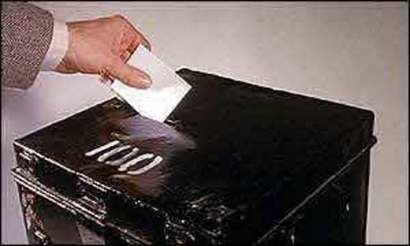Scots election review critical of e-counting IT
Electoral Commission finds political considerations had negative influence on e-counting trials and policy framework is under-developed.


The Electoral Commission has published a damning report on the breakdown of procedures that led to chaos during the Scottish local and parliamentary election counts earlier this year.
Widespread reports of 'technical glitches' with a computerised vote counting system used live for the first time during the May elections led to delayed results in at least nine constituencies, while some 150,000 votes were excluded.
The subsequent independent external Commission review, led by elections expert Ron Gould CM, broadly found that political considerations hampered the effectiveness of technology preparation for electronic counting procedures.
The e-counting system, supplied by automated data capture specialist DRS, was bought by the Scottish Parliament last year and went through what was then thought of as a successful testing period before the elections. It also followed the successful use of similar systems in 2001 when the capital's voters went to the polls for the London Assembly.
However, the review found the technical problems on the night had arisen because the database had not updated its internal statistical information on the night.
"Modern databases such as the SQL Server make use of 'intelligent' rules to determine how best to undertake complex processing," said the report. "But because the database had incorrect information about the sizes of various data tables, it had chosen to process the count information in a particularly inefficient manner."
This database glitch meant that the queries that determined whether all ballot papers had been correctly processed could not complete. It also meant that in some cases, the system could not provide progress information within the allotted ten minute slot and therefore the system displayed 'zero' figures.
Get the ITPro daily newsletter
Sign up today and you will receive a free copy of our Future Focus 2025 report - the leading guidance on AI, cybersecurity and other IT challenges as per 700+ senior executives
The review was highly critical of the fact that "this technical problem had not occurred during the testing activities undertaken by DRS or by the Project Board".
It found there were a number of small differences in the configuration of the system for the test and for the actual count that were significant to its operational ability to scale.
For example, the most significant of these differences was that the test configuration only had information relating to the set-up at a single count centre, with 50 entries in the 'contest' table, which related to the total number of wards and constituencies to be counted each centre. But the final configuration used at each count centre contained information relating to all count centres for resilience purposes, which resulted in about 550 entries in the 'contest' table.
The Commission also said the 32 Returning Officers individually responsible for election administration in their constituencies found themselves "swimming upstream" against the introduction of the new technology.
And it said the appointment of one contractor to provide the electronic counting system, using the same technology, equipment and software across the whole of Scotland made it difficult for regionally dispersed Returning Officers to take effective remedial action when problems occurred.
IT PRO
It has subsequently extended its software to include new automated features, like updating of statistics prior to the start of each count; the rebuild of indexes prior to each count starting; and the recompiling of stored procedures prior to each count starting. User level monitoring and early warning of database performance issues arising during the count, with user level capability for corrective actions, have also been added.
The report also called for legislative and policy frameworks that guide electronic counting and better, as well as more comprehensive pilot phases and user acceptance testing.
A 25-year veteran enterprise technology expert, Miya Knights applies her deep understanding of technology gained through her journalism career to both her role as a consultant and as director at Retail Technology Magazine, which she helped shape over the past 17 years. Miya was educated at Oxford University, earning a master’s degree in English.
Her role as a journalist has seen her write for many of the leading technology publishers in the UK such as ITPro, TechWeekEurope, CIO UK, Computer Weekly, and also a number of national newspapers including The Times, Independent, and Financial Times.
-
 Should AI PCs be part of your next hardware refresh?
Should AI PCs be part of your next hardware refresh?AI PCs are fast becoming a business staple and a surefire way to future-proof your business
By Bobby Hellard
-
 Westcon-Comstor and Vectra AI launch brace of new channel initiatives
Westcon-Comstor and Vectra AI launch brace of new channel initiativesNews Westcon-Comstor and Vectra AI have announced the launch of two new channel growth initiatives focused on the managed security service provider (MSSP) space and AWS Marketplace.
By Daniel Todd